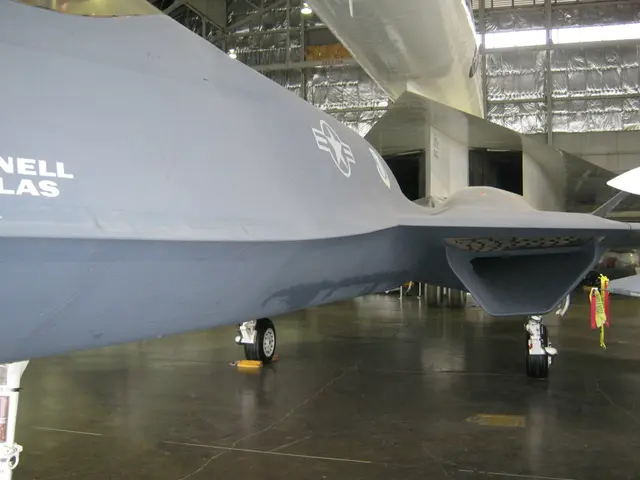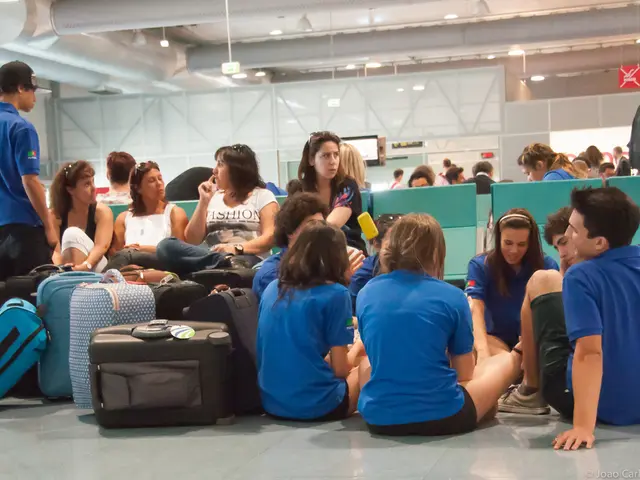Stagnation in Fresh Acquisitions
Struggling School Bus Operators Caught in the Crossfire of Electrification
School transportation is finding itself in hot water as the demise of Lion Electric has left them in the dark about their next move, even when it comes to buying a new school bus. Let's dive in to better understand the situation.
Cue "We're Scared of Being Stuck with White Elephants", by our very own website. Basically, it's forbidden to register brand-spanking new diesel school buses thanks to a government regulation in effect since fall 2021. But we hit a dead end with electric models.
You see, the cost of acquiring an electric vehicle is hefty, and it's impossible to finalize a deal without knowing whether the School Transportation Electrification Program (STEP), which provided purchase subsidies, will be renewed. Foreign manufacturers' electric school buses can vary anywhere from $500,000 to $300,000 - $350,000 for Lion's buses, according to the industry.
A Ticking Clock
"The entire industry is really on the line," warns Stéphane Boisvert, president of Autobus Seguin. By September, we know that around 1,200 school vehicles will be scrapped."
Right now, the lifespan of a school bus is limited to 12 years. The Federation of School Bus Operators (FTA) has already suggested to Quebec that this deadline be extended for school buses equipped with thermal engines, but Stéphane warns it's like putting a band-aid on the problem.
Aside from the government potentially reversing its decision and allowing operators to acquire diesel models, there are hurdles to be faced. For starters, the ordering season is already advanced in the industry. Furthermore, these models have gone from $115,000 to over $200,000 in the past three years, which is more than the financial framework operators signed with Quebec can handle.
Time is swiftly running out, as the Federation believes solutions are limited. If Quebec wants to maintain its electrification targets by the end of the decade, STEP must be "flexible." In other words, subsidies should be modified based on the prices of various manufacturers to soften the impact of acquisition costs. If Quebec opts for an exception with diesel school buses, financial aid to cover the price increase of these models should also be offered, alleges the FTA.
Source: FÉDÉRATION DES TRANSPORTEURS PAR AUTOBUS
Making Ends Meet:School transportation operators faced with financial difficulties have multiple options to cut costs and maintain operations:
1. Jump on Vehicle-to-Grid Programs
Participate in vehicle-to-grid programs to generate revenue by allowing electric buses to supply stored energy to the grid during peak demand periods. To learn more about these programs and how they work, check out this explainer article.
2. Snag State and Local Grants
Federal Clean School Bus Program funds are delayed, but state-level subsidies are still available. For example, California recently allocated $500 million to deploy 1,000 electric buses and charging stations, with priority on low-income districts. Operators in other states should keep an eye out for similar incentives.
3. Form Partnerships
Collaborate with companies like First Student Inc., which aims to electrify two-thirds of its fleet by 2035, or energy companies to reduce upfront costs. Such partnerships typically include shared infrastructure investments and long-term maintenance agreements.
4. Gradually Embrace Hybrid Models
Transitioning to a mixed fleet (diesel and electric) enables operators to replace buses gradually as funding becomes available. This approach reduces sudden capital expenditures while gradually achieving emission goals.
5. Speak Up for Policy Consistency
Lobby for reliable federal funding, like in California, where over 1,100 electric buses are already operational. Clear policy frameworks decrease uncertainty and foster private investment.
6. Tap into External Funding Pools
Organizations like the World Resources Institute have identified $2.3 billion in subnational funding available for electric bus purchases. Access these funds through grants or low-interest loans tailored to clean transportation.
- The School Transportation Electrification Program (STEP), which offers purchase subsidies, is crucial for school bus operators to afford electric vehicles, as the costs can range from $500,000 to over $350,000 for some foreign manufacturers' models.
- Stéphane Boisvert, president of Autobus Seguin, states that if the entire industry is to survive, action needs to be taken as around 1,200 school vehicles are expected to be scrapped by September due to the current situation.
- To alleviate the financial burden, school transportation operators are advised to explore various strategies, such as participating in vehicle-to-grid programs, securing state and local grants, forming partnerships, gradually embracing hybrid models, and lobbying for consistent federal funding.
- Additionally, operators can seek external funding from organizations like the World Resources Institute, which has identified $2.3 billion in subnational funding available for electric bus purchases.
- The public-transit and transportation industry in general is currently experiencing a significant shift towards electrification, which, when combined with government regulations and subsidies, can impact the budgets and operations of school bus operators.








